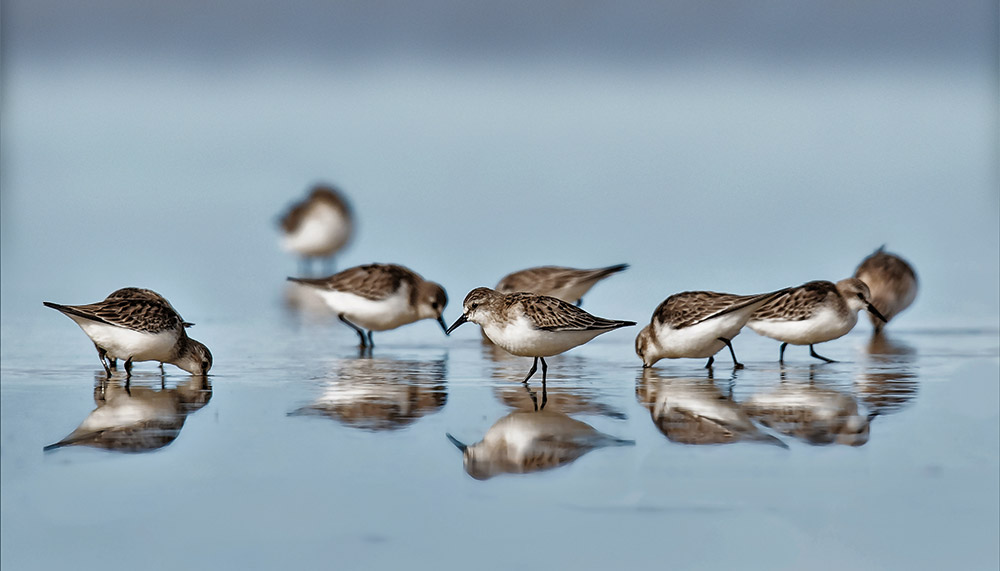Thousands of Australians are helping to protect the declining populations of migratory shorebirds that fly between the Northern and Southern hemispheres every year.
Story + Photos Kerry Sharp
The rising tide has reclaimed all but a thin slice of Darwin’s Lee Point beach and Gavin O’Brien and his volunteer team have their spotting scopes trained on a mass of birdlife huddled on the water’s edge.
The team conducts monthly counts at 6 local sites to gauge numbers among the 37 migratory shorebird species that arrive like clockwork each August to roost and feed on Top End beaches and saltpans. Lee Point is a hotspot where 8000 birds have been recorded in a single session. Up to 5000 great knots are seen regularly and a record 1800 black-tailed godwits were sighted recently.
The mission is to count numbers and record details of birds wearing leg flags fitted during cannon-netting survey expeditions, to identify places they visit along their 10,000km East Asian–Australasian flyway between Siberian and Arctic breeding grounds and Southern Hemisphere non-breeding grounds.
“We see lots of flags and submit the colours and codes to the online BirdMark site, which communicates details to international shorebird agencies,” Gavin says. “This helps build a picture of where specific birds have come from and whether populations are suffering from local impacts. They include many of our own NT yellow-over-blue flags, which show that birds tagged here keep coming back year after year. We also see flags from Shanghai in China, Kamchatka Peninsula in Far Eastern Russia, and Japan, Taiwan and South Korea. Hong Kong’s yellow-over-white flags excite us most because we rarely see them here. Conversely, Bird 334, a Taiwan-banded greater sand plover, has been spotted here at least 60 times in recent years.”
.
This story excerpt is from Issue #148
Outback Magazine: April/May 2023










